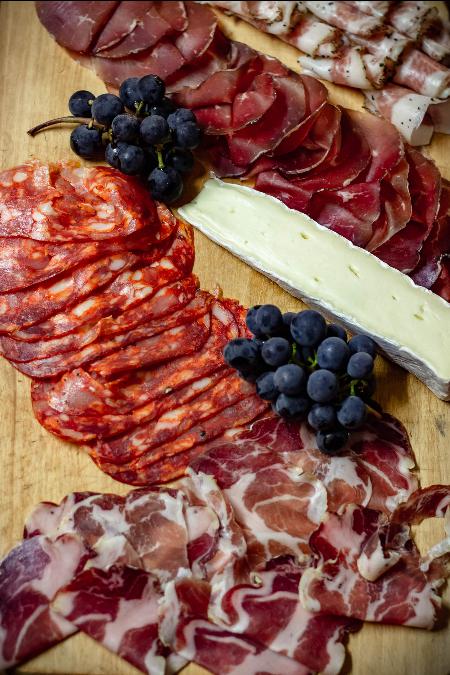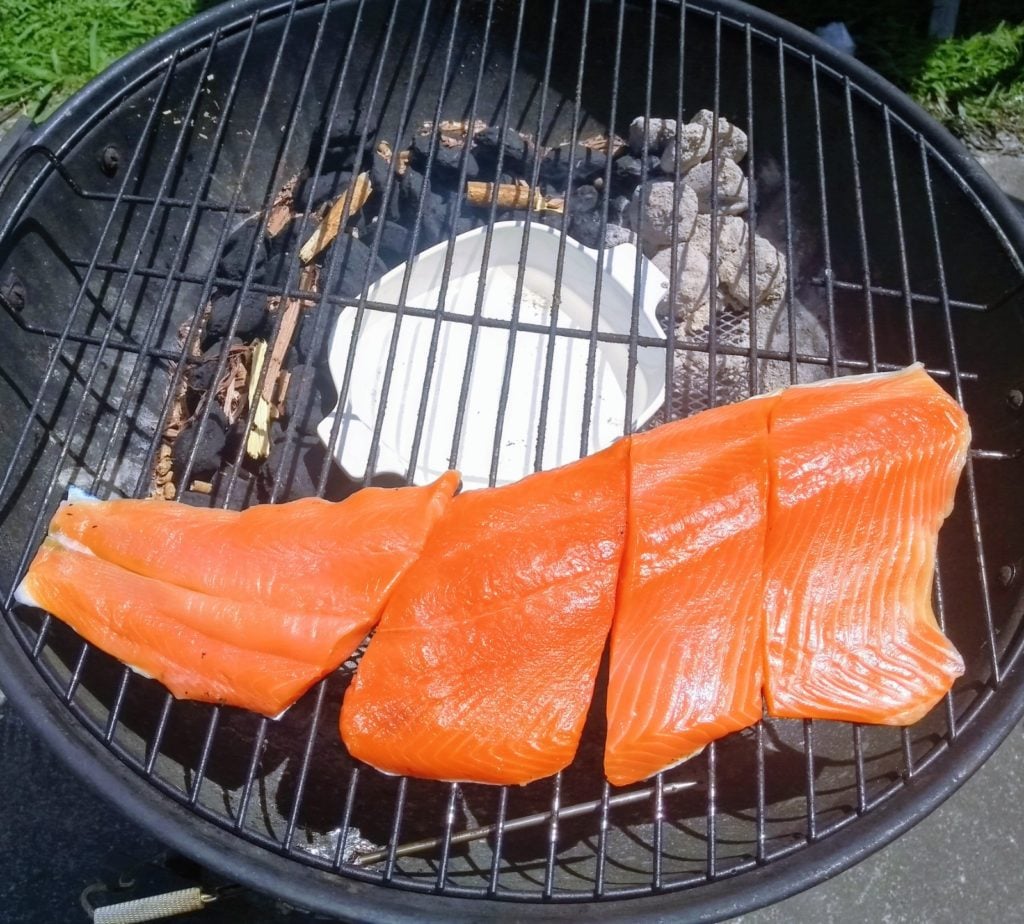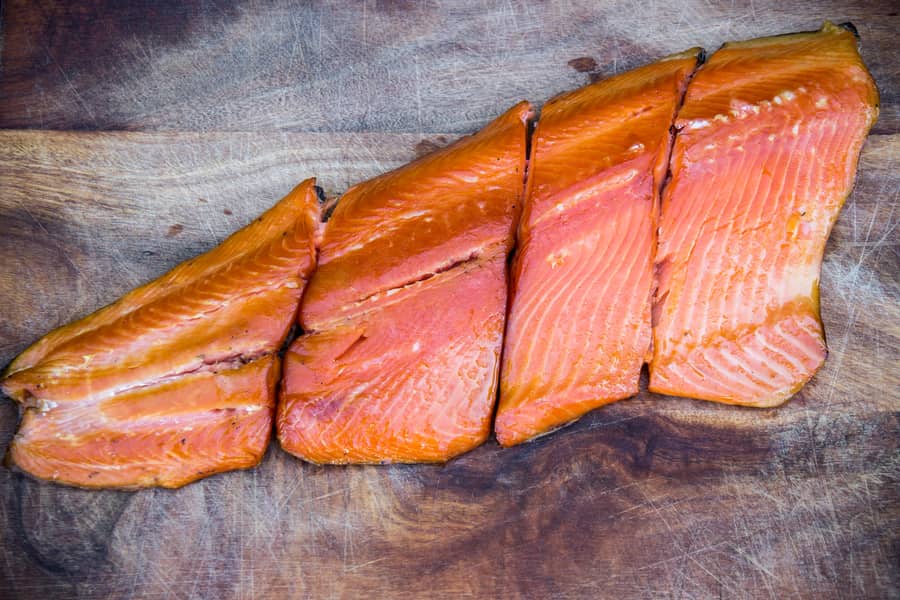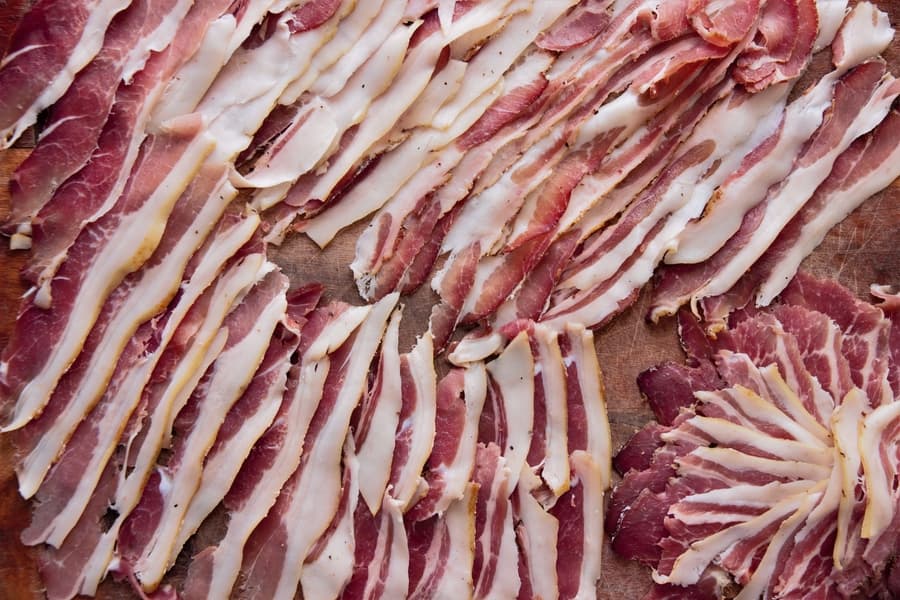Because cured meats come in many different types and variations, whether you have to cook them or not depends on a few things.
Meat curing has fascinated me for a long time. I’ve gone across Europe (especially Italy) purely to savor the types of cured meats they have there. For example, Calabrian Njuda (a spreadable pork sausage, or Parma from Parma Ham!).
Also, the Emilia-Romagna region, Italy – where the Apennine Mountains and the Adriatic breeze create the microclimate for making the famous cured meat Parma Prosciutto (it’s good marketing, too!)
The list below shows the different types of cured meats, what category they fit into, and whether you can eat them without cooking. First, a summary.
Cured meats like dry-cured bacon need to be cooked. Other types of cured meats such as salami, smoked hams, pastrami, biltong, and prosciutto, do not need to be cooked.

Cured meats have salt added to preserve and enhance the flavor before being cold or hot-smoked. Some cured meats are not smoked like dry-cured salami. Some cured meats are not preserved but cooked and possibly smoked.
Cured meats (article on cooked and not cooked cured meats) have a wide definition, but in a nutshell, the above is correct. Salt is used for the preservation of meat and can also be used to hold moisture in so that it is still juicy after cooking.
It’s a critical point that often confuses people about curing meat. Since, at different salt levels, different ‘curing’ occurs for different outcomes.
On one end, salt pork (lots of salt), on the other end salt, brined turkey for roasting (minimal salt)!
Why do Some Cured Meats Need to be Cook
In another post, I did 50 interesting examples of cured meats and found that cold smoked bacon is nearly the only example of a cured meat that needs to be cooked.
Different Types of Cured Meats
3 Types I will explain below:
- Dry Cured Meats – Dried Not Cooked & Ready to Eat
- Cured Meats That are Cooked – Ready to Eat
- Cured Meats That Need Cooking
1. Dry Cured Meats – Dried Not Cooked & Ready to Eat
Not Cooked and Don’t Need Cooking
Italian, Spanish, German, French, and other European countries have an incredibly long history of variations in the category. Basically, this was preservation with salt when the months became cooler, so meat would last through winter.
It’s been refined over a few thousand years.
Here are examples, but this list is far from being complete!
- Sujuk
- Country Ham
- Prosciutto
- Gravalax
- Chorizo (Dry Cured)
- Westfalian-Ham
- Nduja
- Cervelat
- Lap Cheong
- Braesola
- Lonza
- Parma Ham
- Pancetta
- Spalla
- Culatello
Salumi, including salami, are all dry-cured in a traditional Italian way. (Here is a post about the difference)
For all whole muscle-cured salumi, it’s from the pig (apart from braesola). Salt is used, and the meat is dried to a point where unwanted bacteria have been ‘controlled.’

The Main Salumi Cured Meats:
| Salumi Cut | Muscle Group |
|---|---|
| Braesola | Beef Topside Muscle |
| Pancetta | Pig Belly |
| Guanciale | Pork Jowl (Outside of Cheek) |
| Lonza | Pork Loin |
| Coppa | Upper Pork Loin Near Neck |
| Prosciutto | Pork Back/Hind Leg |
| Spalla | Front Pork Leg |
| Culatello | Deboned Back/Hind Pork Leg |
Dry Cured Salami’s
Dry-Cured and Ready-to-Eat
There are thousands of variations – here are some common ones:
- Genoa
- Pepperoni
- Picante
- Soppressata
2. Cured Meats That are Cooked – Ready to Eat
Either Cooked with Hot Smoke or Cooked and Flavored with Cold Smoke


- Hot Smoked Salmon
- Hot Smoked Bacon
- Mortadella
- Gammon
- Chorizo
- Black Forest-Ham
- Pastrami
- Kabanos (Slim Jim’s)
- Speck
- Bündnerfleisch
- Basturma
- Salt Cured & Oil
- Anchovies
- Pickled Herring
- Kuivaliha
- Lahndi
- Sukuti
3. Cured Meats That Need Cooking
This is a list of salted meats, except for bacon, which needs to be cooked.
Technically, you could try to eat salted meat, which is heavily preserved, but it would be pretty impossible to chew it, and the saltiness would be unhealthy and overwhelming. To make it edible, soaking or simmering it in freshwater is needed.
For example, salted meat could be added straight to stews (skip adding any other salt!)
- Cold Smoked Dry Cured Bacon
- Salt Cod
- Salt beef
- Salt pork
- Carne-de-sol (beef exposed to the sun for one or two days to cure (from Brazilian/Jewish origin)

Dry Cured Cold Smoked Bacon
When I was categorizing these dry-cured meats, I thought it was crazy that cold smoked bacon (yes cold smoking bacon is safe, I wrote an article about that here) was one of the only types that had to be cooked.
Most of the supermarket bacon you buy in the Western world will be cured and possibly slightly dried, but it really is a “raw” product.
Is Curing the Same as Cooking?
No, Curing meat adds salt for preservation and also for flavor. Cooking meat is to heat it to a temperature until it is safe to eat.
Why is it Acceptable to Eat Prosciutto Raw?
Prosciutto has been dried until no unwanted bacteria is present. Salt has been used to preserve and flavor the meat to perfection.

Tom Mueller
For decades, immersed in studying, working, learning, and teaching the craft of meat curing, sharing the passion and showcasing the world of charcuterie and smoked meat. Read More

Hi Tom,
Doing a bit of research on shipments of buffalo tongues from the West to the east for dining among wealthy. Natives brought 10,000 into a fur post to trade. Journals at a Fur Post say tongues were removed from salt and hung to dry, another journal says 170 were cut from the heads and placed in warm salt water. These dried tongues were packed into barrels for shipment. Is just salting for a couple days a 2-4 lb. tongue and hanging it to dry 2-3 weeks enough to make it last a several month journey to restaurants. Thinking of reproducing this for a historical event. I have roasted many, but these recipes call for soaking the dried tongue a day and a night and boiling it for up to 6 hours, or slicing thin and broiling the dried tongue in the field. Any thoughts on this? Thanks, Karl
Hey Karl,
You could make the salted tongue, (if it was me) saturate them for 1 week in a saturation method. Dry Curing offal is not something I have experimented with…yet!
Do a test first! Soaking in fresh water will draw some of the salt out and make it possibly palatable. Your talking traditional food fare not refined charcuterie! If it was me, after fully salt curing for a week. I would try soaking for 12 hours, 24 hours and 36 hours – see how they cook up! Maybe sous vide for a more refined outcome?
“Beef tongue requires a very long time to fully tenderize. For a medium-rare tender steak texture you can sous vide it at 131°F (55°C) for 2 to 3 days”.just googled sous vide tongue…
Dry cured bacon needs cooked? What is pancetta? Dry cured bacon?
dry cured bacon is often not dried to a weightloss of 30%+, so it’s not the dryness of pancetta.
If I make summer sausage in the oven using Tender Quick can I cold smoke it later for additional flavor?
I would cold smoke before cooking, but if the meat has a pellicle/dry exterior – might work
I went searching for a answer to whether or not lup cheong really needs to be cooked before eating. My mom always added it to our charcuterie board with no one getting sick, but I kept reading it needed to be cooked first. I stumbled across your site, and was happy to discover it here! Wonderful site, I’ll be back for sure!
Cool, yeah its a wide wide world of sausagey/salami! Cheers Tom
I make sausage{pork and beef} seasoned with salt and cure with a 3 to one ratio. I smoke it for about 4 hours. Will the cure make the sausage edible without cooking at any future time?
no, and I dont know what you mean about ratios. dry curing is about quality of meat, enough salt inhibition, technique and drying. Sounds like you are are cooking/hot smoking.